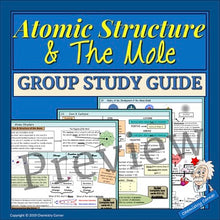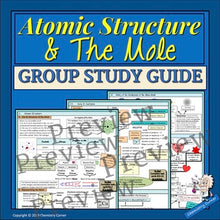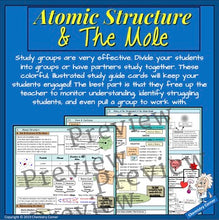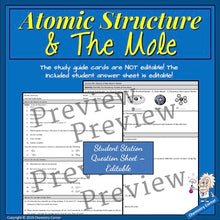I have had such success using study groups when review time comes around. Students are assigned a study partner. Then when it’s time for a review, I have them study with their study partner or with another two partners to form study groups. I like study groups better and have more success with groups. I think this is a great exercise in studying together, and hopefully they will continue to use this highly effective strategy when they are in college.
But the best thing about using study groups is that it frees up the teacher to monitor understanding, identify struggling students, or even pull a group to work with.
Don't have time for a group study day? No problem! The student questions can be assigned independent of the study guide group cards. And, the questions are editable allowing you to change or add questions as needed.
I have found that these colorful, illustrated study cards keep students engaged in the review. I laminate them on card stock so the color won’t bleed through, and I can make two-sided copies. Print a class set – enough for the number of groups you will have, and you will have this great resource for years to come.
The student answer sheet is editable in case you want to change any of the questions to fit your needs.
SPECIAL NOTE: Please look through the preview above for this resource. Each topic included is shown clearly. This study guide is NOT editable. The student answer sheet is editable.
This Unit Study Guide includes these objectives:
* Students will relate the mass, charge, and location of the three primary subatomic particles.
* Students will Identify the atomic number, mass number, number of protons, neutrons, and electrons for elements using information on the periodic table.
* Students will represent a neutral atom using hyphen notation and the nuclear symbol.
* Students will determine if an ion is a cation or a anion.
* Students will calculate the number of electrons in an ion using information on the periodic table and the element’s nuclear symbol.
* Students will define isotope and understand that most elements have more than one isotope.
* Students will explain that atoms of the same element have the same number of protons, but can have a different number of neutrons.
* Students will calculate the number of neutrons in an isotope given the mass number for the atom or ion.
* The student will calculate the average atomic mass of sample elements
* Summarize Rutherford’s gold foil experiment, and draw conclusions from the experiment.
* Discuss the dual-wave particle nature of electrons.
* Identify the five basic models of the atom
* Discuss the current Quantum Mechanical Model of the atom.
* The student will define mole in terms of Avogadro’s number.
* The student will use the periodic table to determine molar masses of pure substances.
* The student will perform calculations involving mass in grams, amount in moles, number of atoms in a pure substance, and molar volume.
Included in this resource:
* Group Study Cards (3 pages)
* Student Answer Sheet with questions (pdf)
* Editable Student Answer Sheet
* KEY
This study guide will be a something you will want to use year after year!
This lesson is appropriate for grades 9-12 chemistry or physical science.
Chemistry Corner
*********************************************************************************
You may also be interested in these included products:
High School Chemistry Year Curriculum
Chemistry Doodle Notes for the Year: A Growing Bundle
Chemistry BellWork/WarmUps Editable- For the Entire Year
Chemistry Task Cards for the Year: A Growing Bundle
*********************************************************************************
LICENSING TERMS: By downloading this product, you own a license for one teacher only for personal use in your classroom. Licenses are non-transferable, meaning they cannot be passed from one teacher to another. No part of this resource is to be shared with colleagues or used by an entire grade level, school, or district without purchasing the proper number of licenses. I you are a coach, principal or district interested in transferable licenses to accommodate yearly staff changes, please contact Chemistry Corner.
COPYRIGHT TERMS: ©Chemistry Corner. Please note – all material included in this resource belongs to Chemistry Corner. By downloading, you have a license to use the material, but you do not own the material. This resource, or any portion of this resource, may not be uploaded to the internet in any form, including classroom/personal websites or network drives, unless the site is password protected and can only be accessed by students—no other teachers or anyone else on the internet.








